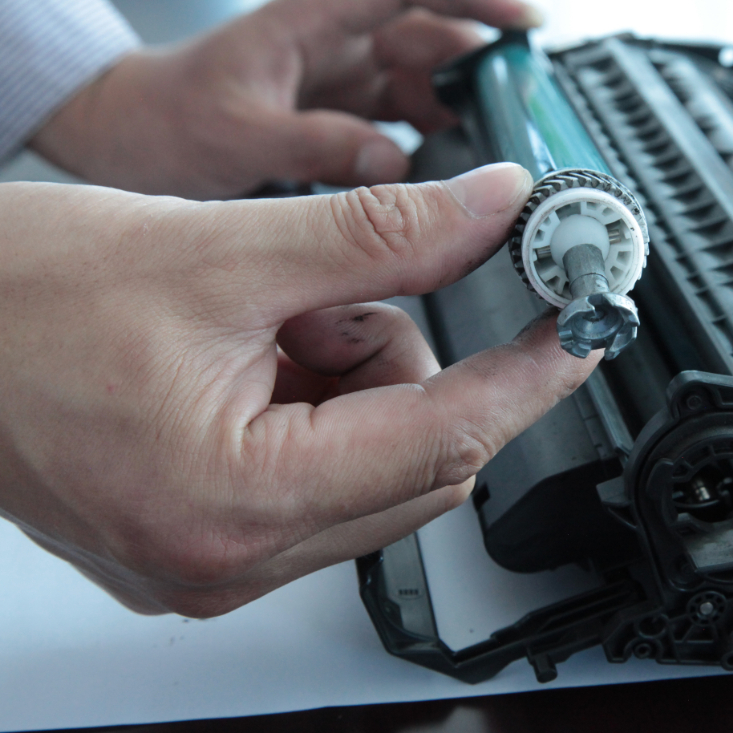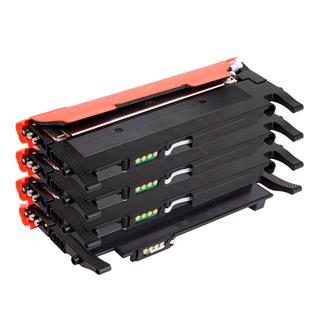Canon Law Suits: Why Every Manufacturer Should Be Worried
By Steve Weedon, CEO of Discover Imaging Products Ltd.
 Canon has not, it seems, used the ITC (US International Trade Commission) in its second round of suits against the printer cartridge aftermarket. It has filed the lawsuits directly at the Southern District Court in New York City, seeking damages and injunctive relief.
Canon has not, it seems, used the ITC (US International Trade Commission) in its second round of suits against the printer cartridge aftermarket. It has filed the lawsuits directly at the Southern District Court in New York City, seeking damages and injunctive relief.
Canon were placed number 3 in the number of patents awarded to it in North America in 2103. This $40 billion annual revenue company has not been out of the top 10 in the last 28 years and typically gets around 2,000 patents issued a year. Companies like Canon typically file for patents as a protective measure to ensure they do not get locked out of a particular technology, rather than using them to litigate. But what is the use of spending all that R&D money on innovative improvements in technology if you are not prepared to defend them. Clearly Canon is sending the message that they will defend their technology and want “money” to compensate them.
So what does this mean to the aftermarket?
Of the 18 companies named as respondents, five belong to the PrintRite Group (Innotex Precision, PrintRite Holdings, PrintRite NA, PrintRite Unicorn Image Products and UTEC). Another 3 belong to the Aster Group (Aster Graphics Inc., Aster Graphics Co Ltd, and Jiangxi Yibo E-Tech Co Ltd). American Internet Holdings and The Supplies Guys are also of the same group. Acecom Inc. was part of the 2012 Canon-ITC action, and find themselves being sued a second time by Canon.
The 18 respondents are essentially in three groups. Seven are online resellers of toner cartridges, eight are Chinese owned and two are well-known, large remanufacturers: ILG and MSE.
If you are making, selling and/or reusing a newly molded, compatible (“clone”) cartridge that uses an OPC drum with a “dongle “type rotating arm that is exactly the same as Canon’s design, then you are clearly infringing Canon patents. Canon’s stronger patents are on the rotating arm. So without prejudging the outcome, it would seem those dealing with clones have a big hurdle to cross to not lose their lawsuit.
Remanufacturers, on the other hand, do not need the rotating dongle arm because it’s available on every used original cartridge. It is durable, will never wear out and can be reused during remanufacture, which is what this industry is all about.
Many OPC manufacturers and large distributors do not offer the OPC drum with the rotating arm (dongle) because they are aware of the patents. They also knew that genuine remanufacturers do not need, and would not pay for, additional rotating arms.
Canon has a total of 641 claims against the 18 companies in the current suit. Most of those claims refer to the rotating arm—its design, its features and its technology (it connects with the drive motor, transmitting rotation through the coupling which is snapped into place to engage the drive gear of the OPC, rotating the OPC drum through its axis using a bearing pin on the other end of the OPC). The patents are all-inclusive and cover seemingly every conceivable technology, innovation and design advantages that you can think of. Importantly, this patented system allows for ‘significant higher level of accuracy to rotation of the OPC drum than prior art” used in previous cartridges.
So let’s be clear what this means.
If you are a reseller or distributor of “clones” which rely on the manufacturer copying the OEM design—for the OPC drum, gear and coupling device at one end, an end cap with pivot bearing on the other end, a grounding plate, and a rotation arm ”dongle”—then an infringement to Canon’ patents and its 641 claims is highly probable. You have made a conscious decision to buy what everyone knows are infringing cartridges. Unless the manufacturer substantiates non-infringement, and provides indemnity in the event of a lawsuit, the reseller or distributor takes high risks when purchasing “clone” cartridges.
If, on the other hand, you are a genuine cartridge remanufacturer, using an exhausted OEM cartridge, then you will not need to buy the “dongle” part that connects to the OPC drive end, to provide rotation. If you are reusing a previously used “dongle” made by the OEM then that is good recycling and you are not infringing the “dongle “patent claims.
However, you may be infringing other claims within the rest of these patents. So why are ILG and MSE—who are large high quality cartridge remanufacturers—included in these lawsuits? I truly believe they are genuinely remanufacturing cartridges, and have no need for a third party rotating arm. We have to assume in this case, Canon is relying on its other patents—other than the rotating dongle arm to successfully sue these two companies. Now if this is so, ALL genuine cartridge remanufacturers better watch out. That is a huge concern for the industry.
Do you, as a genuine cartridge remanufacturer who buys OPC drums from makers or distributors, stop and check if the drum and gears are non-infringing? You probably assume that using replacement drums without the dongles means you are free of any patent infringement. However, Canon is now suing genuine cartridge remanufacturers—who are presumably not using newly made “dongles”—for replacing the drum that has a gear and coupling device that infringes an obscure patent claim. Conceivably, this is the case against ILG and MSE. It means thousands of other remanufacturers around the world, who are doing exactly the same, are now at risk also.
OPC drum makers who either buy-in molded gears or mold their own gears are experts in these patents. They always know about these patents BEFORE making and selling a replacement OPC. Distributors who buy from OPC makers, some of who employ patent lawyers on staff, absolutely know about these patents. So why does it take action by an OEM for these companies to step forward and say, “Yes we are aware of Canon’s patent and have a workaround that does not infringe” ? Why do they supply infringing products in the first place? No OPC maker or distributor has, to my knowledge, advertised that they had a new design OPC gear and “dongle” that does not infringe the Canon patents BEFORE Canon took legal action. Only AFTER the fact do they come forward. So they are saying they did know about it, and since they say they can now offer a non-infringing design, they are effectively admitting they were selling an infringing design, and knew it all along.
To date, Canon has only targeted the clone makers, resellers and distributors of finished cartridges, and now also genuine cartridge remanufacturers as well. Canon has not taken action against the OPC manufacturers, or the distributor of OPC’s or any gear supply company in this latest action. These are the companies that know if they are making and selling infringing products, the genuine remanufacturer is clueless about such patent claims, until it is too late.
It’s time the OPC makers and distributors to step up and offer non-infringing products. Remanufacturers must also take responsibility and ask the difficult questions to these suppliers. They may not offer indemnities to protect remanufacturers but they can confirm that they are selling a product that they believe does not infringe an OEM patent or confirm that they know of no patent that the product may infringe. Remanufacturers must stop buying OPC drums with gears blindly accepting that the maker and or distributor has done their homework.
Canon is now going after “blood”. It seems it is not just about clones any more.
It’s not all about the “dongle”. Even genuine cartridge remanufacturers can be caught up in expensive lawsuits by inadvertently buying replacement drums unaware of obscure patent claims buried deep in Canon patent filings.
The imaging industry, particularly in North America, is under attack and is drifting from one crisis to another. It’s time to get organized and hold OPC makers and distributors accountable.
Remanufacturing cartridges is all about recycling for reuse as much as possible from the original exhausted OEM cartridge. Component part manufacturers want to sell as much as possible to make a profit. Remember, that when this industry first started the OPC’s were just tubes with no gears provided, you had to remove and reuse the gears from the worn out OEM drum. There was no fear of infringement back then.






Leave a Comment
Want to join the discussion?Feel free to contribute!